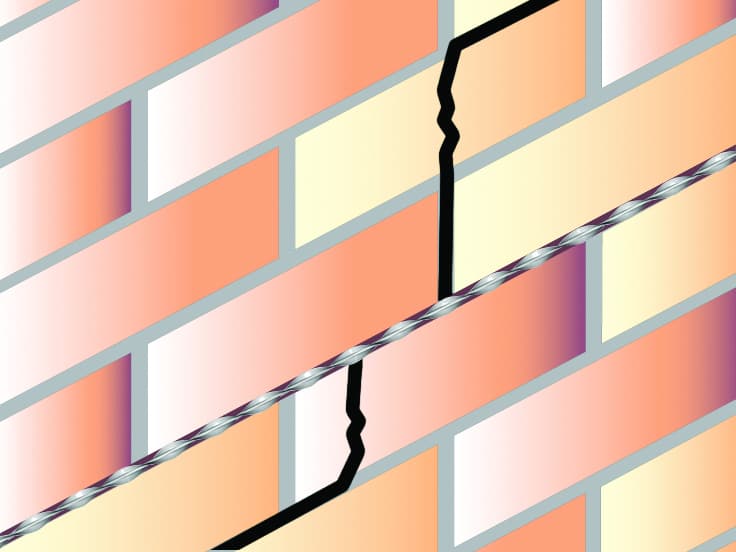Ensuring the structural integrity of buildings is crucial for the safety of its occupants and the longevity of the structure itself. One significant aspect of maintaining the structural stability of masonry work is the repair of cracks that can occur over time due to various factors like settling, thermal movements, or excessive loads. Ignoring these issues can lead to severe consequences, compromising the safety of the building and leading to costlier repairs down the line.
Crack-stitching is a method that offers a discreet and effective long-term solution to stabilize cracked masonry. The process involves the use of specialized products, such as PROSOCO Stitch-Tie Bars and grout. The PROSOCO Stitch-Tie Bars are engineered to anchor into the masonry, bridging cracks and securing the structure. When used in conjunction with SureGrout, these bars not only stabilize the existing crack but also help distribute structural loads across the wall, preventing further propagation.
PROSOCO’s Stitch-Tie product line is designed for durability, ensuring that repairs are as enduring as they are strong. SureGrout is specifically formulated to bond with the masonry and the bars, providing a cohesive reinforcement that is both strong and resilient to environmental factors.

Step 1
Grind away existing mortar, 20” minimum on each side of crack, 1-1/2”-2” deep. Clean with water.

Step 2
Apply a bead of SureGrout at the base of the ground joint.

Step 3
Insert Stitch-Tie® Bar into bead of SureGrout.

Step 4
Apply second/third bead of SureGrout over Stitch-Tie® Bar, and compact with appropriate trowel.
These images show the careful preparation of the masonry, the precise insertion of the bars, and the final application of the grout, which, once cured, will restore the structural integrity of the masonry.
In conclusion, building owners and occupants must not ignore unstable masonry. Properly addressed, such issues can be resolved, ensuring the safety of the building and its inhabitants. By using the products outlined and following the correct procedure, one can mitigate the risks associated with cracked masonry and preserve the structural integrity of the building for years to come.
![]()